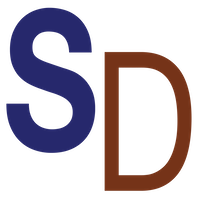Maryam Shanechi, the Sawchuk Chair in Electrical and Computer Engineering and founding director of the USC Center for Neurotechnology, and her team have developed a new AI algorithm that can separate brain patterns related to a particular behavior. This work, which can improve brain-computer interfaces and discover new brain patterns, has been published in the journal Nature Neuroscience.
As you are reading this story, your brain is involved in multiple behaviors.
Perhaps you are moving your arm to grab a cup of coffee, while reading the article out loud for your colleague, and feeling a bit hungry. All these different behaviors, such as arm movements, speech and different internal states such as hunger, are simultaneously encoded in your brain. This simultaneous encoding gives rise to very complex and mixed-up patterns in the brain’s electrical activity. Thus, a major challenge is to dissociate those brain patterns that encode a particular behavior, such as arm movement, from all other brain patterns.
For example, this dissociation is key for developing brain-computer interfaces that aim to restore movement in paralyzed patients. When thinking about making a movement, these patients cannot communicate their thoughts to their muscles. To restore function in these patients, brain-computer interfaces decode the planned movement directly from their brain activity and translate that to moving an external device, such as a robotic arm or computer cursor.
Shanechi and her former Ph.D. student, Omid Sani, who is now a research associate in her lab, developed a new AI algorithm that addresses this challenge. The algorithm is named DPAD, for “Dissociative Prioritized Analysis of Dynamics.”
“Our AI algorithm, named DPAD, dissociates those brain patterns that encode a particular behavior of interest such as arm movement from all the other brain patterns that are happening at the same time,” Shanechi said. “This allows us to decode movements from brain activity more accurately than prior methods, which can enhance brain-computer interfaces. Further, our method can also discover new patterns in the brain that may otherwise be missed.”
“A key element in the AI algorithm is to first look for brain patterns that are related to the behavior of interest and learn these patterns with priority during training of a deep neural network,” Sani added. “After doing so, the algorithm can later learn all remaining patterns so that they do not mask or confound the behavior-related patterns. Moreover, the use of neural networks gives ample flexibility in terms of the types of brain patterns that the algorithm can describe.”
In addition to movement, this algorithm has the flexibility to potentially be used in the future to decode mental states such as pain or depressed mood. Doing so may help better treat mental health conditions by tracking a patient’s symptom states as feedback to precisely tailor their therapies to their needs.
“We are very excited to develop and demonstrate extensions of our method that can track symptom states in mental health conditions,” Shanechi said. “Doing so could lead to brain-computer interfaces not only for movement disorders and paralysis, but also for mental health conditions.”

